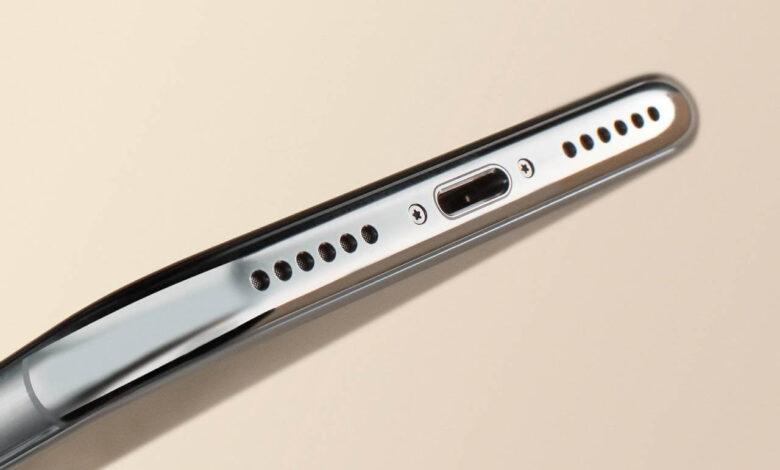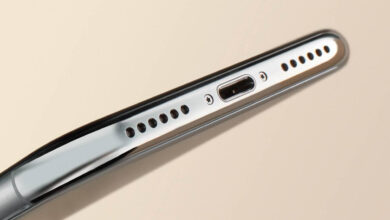How Do You Know If Your Phone Speaker Is Damaged: Signs to Look Out For

Discovering that your phone speaker is malfunctioning can be quite frustrating, especially when trying to enjoy your favorite tunes or catch a call on speakerphone. However, recognizing the signs of damage early can help you address the issue before it worsens. There are several indicators that can alert you to a potential problem with your phone’s speaker.
One of the most evident signs is distorted or muffled audio, which often signifies that the speaker could be damaged. If your music or calls sound unclear or the audio volume is inexplicably low despite being at the maximum level, this might be an indication of speaker failure. Also, if you notice that there is no sound at all, even when the volume is turned up, or the sound cuts in and out, it could mean that the speaker is not functioning properly.
Physical inspection of the speaker can also reveal issues. Visible damage, such as cracks or dents on the speaker grille, or any signs of liquid damage, points to the likelihood that your phone’s speaker has been compromised. If you come across any of these signs, it could be time to consider repair options or consult a professional to assess the condition of your speaker.
Common Symptoms of Speaker Damage
When your phone speaker is not working as it should, it’s crucial to identify the signs of damage. Familiarizing yourself with common symptoms can help you determine the right course of action.
Distorted Sound
If you’re hearing sounds that are warped or unclear during playback, it’s a sign your speaker might be damaged. This distortion could occur at different volume levels and often points to a failing speaker cone.
Low Volume Issues
Are you constantly turning up the volume but the sound is still not loud enough? This might indicate that your speaker’s capability to produce sound is diminishing, a clear hint of potential damage.
Crackling or Popping Noises
Crackling or popping sounds during audio playback, which are not part of the original audio, suggest that the speaker’s components may be deteriorating or that there is a loose connection.
Inaudible Sound
When sound from your speaker becomes faint or completely silent despite the volume being up, it can mean that the speaker is unable to generate sound due to internal damage or failure.
Diagnosing Speaker Issues
When your phone’s audio isn’t sounding quite right, it’s crucial to efficiently determine if speaker issues are to blame. Follow these steps for accurate diagnosis.
Hardware Tests
First, check all the hardware components related to sound. Initiate a basic functionality test by playing different types of audio—music, ringtone, video sound, and speakerphone calls. If the sound is inconsistent or non-existent across multiple applications, your speaker may have hardware issues.
Software Diagnostics
Navigate to your phone’s built-in diagnostic tools found in the settings menu. Use these tools to run tests that can confirm whether the issue is software-related. In some cases, updating the phone’s software or performing a factory reset can resolve audio problems.
Physical Inspection
Examine the speaker for visible signs of damage such as cracks, dents, or foreign objects obstructing the grille. Even minor physical damage can impact speaker performance significantly.
Professional Diagnostic Tools
If preliminary checks don’t reveal the problem, it may be time to consult a technician. Professionals have access to advanced diagnostic equipment that can more accurately identify and resolve deeper hardware issues.
Causes of Speaker Damage
When your phone’s audio performance declines, it could be due to several factors. Understanding these causes can help you prevent damage in the future.
Liquid Exposure
If your phone comes into contact with liquids, it can cause the speaker parts to malfunction. Even a small amount of water or humidity can corrode the metal components inside the speaker, leading to distorted sound or complete failure.
Physical Impact
Dropping your phone or subjecting it to a heavy blow can damage the speaker. The sensitive internal components are prone to physical shocks, which can alter the speaker’s ability to vibrate and produce sound accurately.
Dust and Debris
Accumulation of dust and debris in the speaker grills can impede the movement of the speaker diaphragm, resulting in muffled or low audio output. Regular cleaning of the speaker grills can help minimize this type of damage.
Wear and Tear
Over time, regular usage can naturally degrade your phone speaker’s performance. This is normal wear and tear; speakers have a lifespan and can lose quality with constant use at high volumes or due to the aging of materials.
Troubleshooting Speaker Problems
Identifying and resolving speaker issues on your phone can be straightforward if you follow some methodical steps.
Basic Troubleshooting Steps
First, check if there’s no sound coming from your phone or if the audio quality is poor. Volume settings are often overlooked; ensure your phone isn’t on mute and the volume is turned up. If that’s in order, test the speaker with different apps and audio files to determine if the problem is consistent across all uses. Sometimes, a simple restart can resolve temporary glitches affecting the speaker.
Cleanup and Care
Regular maintenance is key to prolonging the life of your phone’s speakers. Dust and debris can accumulate and obstruct the sound. Gently cleaning your speaker grills with a soft brush can remove any blockages. If you’re experiencing muffled audio, there’s a safe and effective tool that can help eject water from your phone speakers.
Software Updates and Resets
Outdated software can cause various issues, including speaker problems. Always ensure your phone is running the latest operating system update provided by your manufacturer. If issues persist, performing a factory reset could fix underlying problems. Remember, a factory reset will erase all of your data, so it’s crucial to back up your phone before proceeding. After a reset, set the device up as new and check the speaker again.
When to Seek Professional Repair
In some instances, your phone’s speaker issues cannot be resolved with at-home troubleshooting and require the expertise of a repair technician. Determining whether you need professional repair involves assessing the severity and nature of the damage.
Repair vs. Replacement
Before deciding to seek professional repair for your phone speaker, consider the following:
- Warranty Status: Check if your phone is under warranty. Manufacturers typically cover speaker defects and might offer free repair or replacement.
- Severity of Damage: If your speaker has physical damage, such as cracks or visible water damage, or if there’s no sound despite all troubleshooting efforts, a repair technician should examine it.
- Cost Assessment: Compare the cost of repair with the cost of replacement. If the repair costs approach the value of a new phone, replacing the device might be more economical.
Finding Authorized Service Providers
To ensure that your phone is in good hands, follow these steps to find an authorized service provider:
- Manufacturer’s Recommendations: Visit your phone manufacturer’s website to locate authorized service centers.
- Certifications: Look for providers with certified technicians. They have the training to handle the specific issues your phone may have.
- Service Warranty: Choose providers who offer a warranty on the repair work for added assurance.
- This can range from 30 days to 1 year, depending on the provider and the repair service.
Remember, professional repairs can extend the life of your phone and are often required when the damage is beyond simple DIY fixes.
Preventing Future Speaker Damage
Taking proactive steps can keep your phone’s speaker in top condition for as long as possible. Here’s how you can protect against potential damage:
Protective Cases and Accessories
Invest in a sturdy case: A good quality case can absorb shock and minimize the risk of physical damage to your phone’s speaker from drops or impacts.
Use screen protectors that cover speakers: Some protectors include a thin film that can prevent dust and debris from clogging the speaker mesh.
Safe Usage Practices
Keep volume levels moderate: Avoid maxing out your speaker’s volume. High volume over extended periods can strain the speaker components and lead to premature wear or blowout.
Be cautious with equalizer settings: Overemphasis on bass or treble might stress the speaker. Stick to balanced settings to preserve speaker integrity.
Environmental Awareness
Be mindful of moisture: Water is a common cause of speaker damage. Keep your phone away from high humidity areas and never handle it with wet hands.
Avoid extreme temperatures: Both heat and cold can affect your speaker’s performance. Don’t leave your phone in places like a hot car or near air conditioners.
Frequently Asked Questions
Experiencing issues with your phone speaker can be frustrating. Here are some common questions and straightforward answers to help you troubleshoot and understand potential problems with your phone’s audio output.
Why is my phone speaker making a crackling sound?
Your phone speaker producing a crackling sound can indicate that the speaker is either damaged or there is some interference. Exposure to high volumes for extended periods can cause the speaker components to wear out. Alternatively, debris or dust lodged in the speaker may also cause crackling noises.
Why is my phone speaker not working on calls?
If your speaker isn’t working during calls, it could be due to software glitches or audio settings that are not configured correctly. Check to ensure that the volume is up and that the speaker option is activated during the call. If these settings are correct, you may need to perform a software update or a factory reset as a last resort.
What does a blown phone speaker sound like?
A blown phone speaker will often produce a distorted sound that lacks clarity. It may sound muffled or you might only be able to hear static instead of clear audio. This typically results from a tear in the speaker cone or other physical damages.
How can I test my phone speakers?
To test your phone speakers, access the ‘Settings’ app and navigate to the ‘Sounds’ or equivalent option. Look for a ‘Speaker test’ or ‘Ringtone’ feature to play a sound. If there is no sound or it’s distorted, this could indicate a problem with the speakers.
Why does my phone speaker sound distorted?
Distortion can result from high volume levels that strain the speaker components over time. It could also be due to an accumulation of dirt or moisture affecting the speaker membrane. Audio distortion might also arise from a software issue that can sometimes be resolved by a restart or a factory reset.
How to fix phone speaker water damage?
If your phone speaker has been exposed to water, immediately power off the device and remove the battery if possible. Leave it to dry in a warm, dry place for 24-48 hours. Avoid heat sources or a direct blow dryer as these can cause further damage. If the sound is still distorted after drying, the speaker may need professional repairs or replacement.
